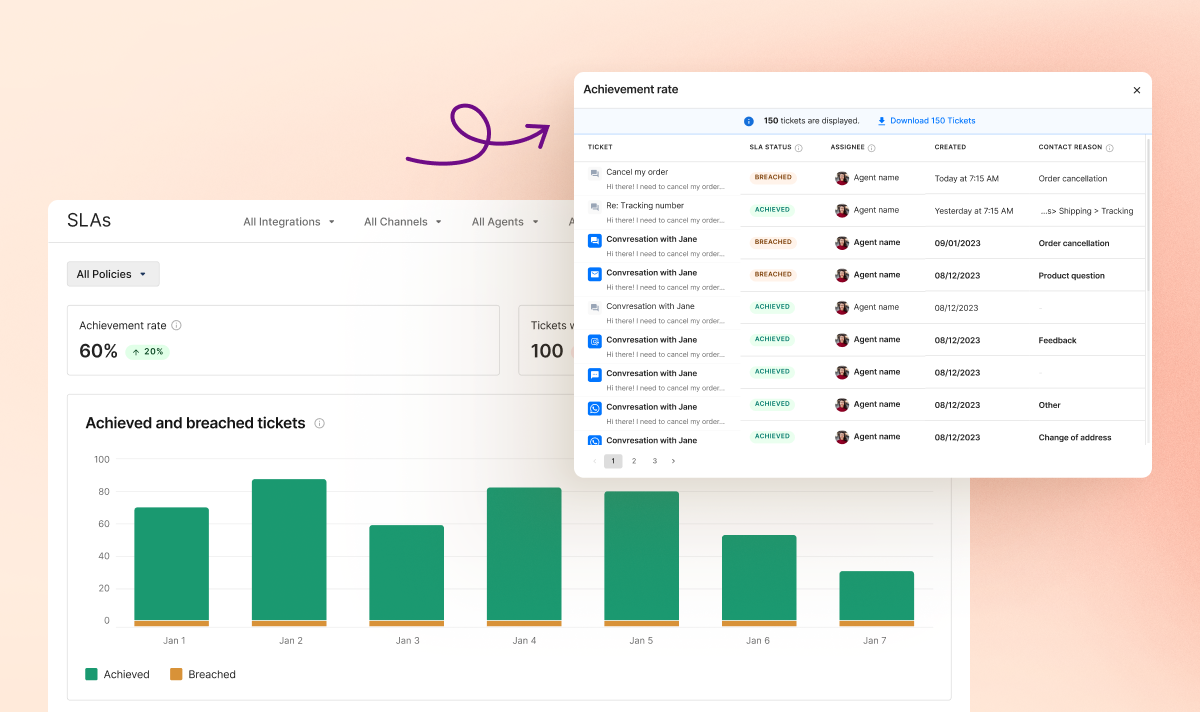Introducing Service Level Agreements (SLAs)
timestamp1718639163137

We're thrilled to announce the introduction of SLAs in Gorgias!
Imagine always having insight into how promptly your team responds to customers, ensuring no one is left waiting and consistently delivering timely responses. It's a game-changer, right? That's why our team has been dedicated to enhancing your experience with seamless SLA management in statistics.
Let's start by clarifying what SLA (Service Level Agreement) means: it's a formal internal policy that defines the expected level of service provided to customers. For example, you might set a goal for your team to respond to an inbound chat ticket within 90 seconds. These agreements are essential for managing customer expectations and ensuring high satisfaction levels.
Here's what's coming your way:
Create an SLA policy to track and enforce First Response Time & Resolution Time. Plus, SLA policies can be created based on channels.
Get insights about SLAs: see each policy's achievement rate, achieved, and breached tickets.
Examine which tickets have achieved or breached with SLA drill-down.
Why should you use SLA?
⭐⭐⭐ Gain insights into team performance and drive productivity.
⭐⭐⭐ Set targets, and enhance customer satisfaction with a consistent customer experience.
⭐⭐⭐Pinpoint individual agent performance (with filters) gaps with SLA data, facilitating targeted enhancements and growth.
🥊 Best practices on how to start with SLA
Check your current FRT and RT per channel.
Define the scope of service to explain the expected performance
Prioritize SLA categories
Establish the escalation process
Specify penalties and incentives
Create an internal document and share it with agents
Check out our helpful documentation to learn how to start creating your first SLA policy.
We hope this update helps you deliver a more consistent customer experience. Check it out and let us know what you think!
Did you like this update?
![]()
![]()
![]()
Leave your name and email so that we can reply to you (both fields are optional):
